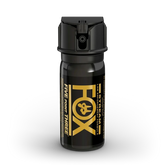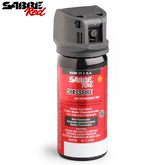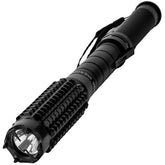DIY Homemade Pepper Spray - How to Make Pungent Spray
Even though mace it is widely available at retailers, there may be times when you may want or need to make homemade pepper spray.

Sometimes referred to as mace or chili spray, it is the most-effective and non-lethal form of self defense available in the vast majority of cases. It's power is a result of capsaicin, an oil derived from plants in the Capsicum family. Some plants have higher capsaicin content then others, and the potency of the spray is a result of the capsinoids percentage. Many commercially manufactured pepper mace sprays come in strengths between 1-2% major capsinoids. Homemade sprays will not come near these potency percentages, but it doesn't take a terribly potent spray to incapacitate an attacker.
We do highly recommend commercially available products, as they've been tested with HPLC testing to ensure heat efficacy. If you're in the market for a defense spray, check out our pepper spray buying guide and reviews to help you find the best pepper spray for you. It you want to try your hand at making your own, then continue reading!
How to Make Pepper Spray at Home
Required Supplies
- Hottest pepper you can find: powdered or dried. Ideally Ghost pepper, but Cayenne will suffice
- Solvent liquid: Rubbing Alcohol
- Eye protection
- Face mask
- Blender or food processor
- Storage bottle
- Funnel
- Cheesecloth
- Spray bottle
Be sure to wear eye protection. If you or someone assisting you has any respiratory issues, such as asthma or COPD, be sure you are wearing a medical grade face mask to prevent inhalation of any powder or vapors when making DIY pepper spray.
The two main ingredients are capsaicin and a solvent liquid used to absorb the capsaicin. For making homemade spray you can use rubbing alcohol, vinegar, or plain water. While water is obviously the cheapest and will work if there is no other option, using ethanol or rubbing alcohol to stabilize the mixture and increase shelf life will work the best.
Steps for DIY Pepper Spray Liquid
- Note that pepper powder can be kept indefinitely and will work better than dried peppers. However, if you cannot find pepper powder, dried peppers will work in a pepper spray recipe.
- The first step is to dry the peppers. This can be done in a food dehydrator, in the oven or just by hanging them in the sun. Whichever method you choose, the peppers must have as much water as possible removed in order to get the highest percentage of capsaicin content.
- When dry, chop the peppers in a blender, food processor or run them through a grinder. The finer the pieces are the more capsaicin will be leeched into the solvent.
- Add enough solvent to just cover the chopped peppers and blend until the solution looks homogeneous. If using a pepper powder, follow the mixing instructions on the package. We recommend adding vegetable oil in as well at a 2:1 tablespoon ratio of pepper ingredients to oil.
- Allow the mixture to stand for 24 hours to allow osmosis to draw the capsaicin from the peppers into the solvent.
- Strain the mixture through a piece of cheesecloth into a storage container. Seal tightly.
- Pour the finished mixture into a spray bottle as needed.
- Because capsaicin is an oil, clean all utensils and surfaces with hot water and a good dish soap.
Is It Legal To Make Your Own Pepper Spray?
The answer is yes. It is legal in all 50 states for persons to use and manufacture pepper spray for personal defense. Residents in states like New York and Massachusetts might prefer for make their own pepper spray because it is illegal to ship defense sprays into the state via mail, making accessibility of pepper mace more difficult. Be sure to check local laws if you aren’t sure. Additionally, even homemade pepper spray can cause serious health issues and can open you up to a variety of civil and criminal legal consequences if used in a manner inconsistent with legitimate self-defense situations. If you want to test it out, ask a willing friend or try it on yourself.
Conclusion
Keep in mind that DIY mace won’t be as effective as commercially made versions due to it not being aerosolized. Additionally, it is difficult to determine the exact percent of capsaicin in a homemade spray. As long as you keep these things in mind, follow the steps outline here and keep a good supply of pepper powder of dried peppers on hand, you will be able to create as much pepper spray as you need.
Shop Stun Batons
- $49.95
$59.95- $49.95
- Unit price
- / per
- $49.95
$54.95- $49.95
- Unit price
- / per
- $55.95
- $55.95
- Unit price
- / per
- $39.95
- $39.95
- Unit price
- / per













